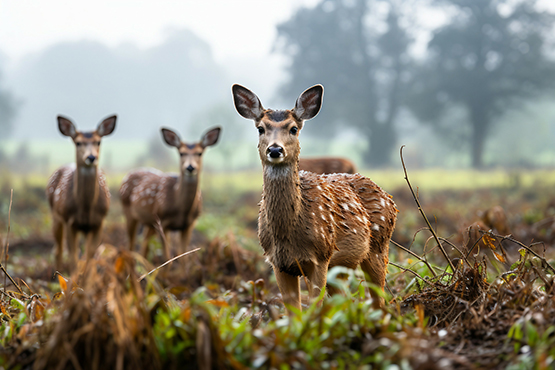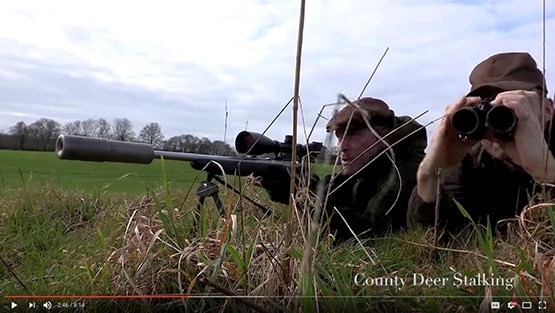My tip for the coming month is to change your routine and schedule your stalking for alternative times of the day.

I seem to recall that it was the great Richard Prior who once remarked that by March, many deer are in a spiral of decline, after the long winter months and a recent bout of ‘man flu’, I must express some empathy with the deer! Yet with March comes promise. It is as though, with a wide yawn and a stretch, nature is at last rubbing its bleary eyes and awakening to longer days ahead. And it is from this awakening and the gradual warming of the sun, that the deer can finally find fresh sustenance in the woods and fields. For this reason March is undoubtedly one of my favourite months.
Clearly the bulk of the stalking in Scotland is at an end. Yet in England & Wales there is one final month to select a few remaining females. Of course at this late point in the season, and with most females now being heavily pregnant, it is not a task that should be done without discretion. Pressing already stressed and heavily pregnant hinds and Does should not be the aim of the deer manager. By March most of the cull of females should have been achieved and so it should be a careful and considered thinning out of a few remaining females, before they become protected at the end of the month.
With a warming of the sun, it is the open fields and woodland boarders that first benefit from new growth. Added to this the deer appear to enjoy a bit of early spring sunshine on their backs and so with these factors combined, during March deer often find an irresistible draw to the open, and in order to get the best of the sun, this will regularly be during the middle of the day. Deer have been studying and avoiding your twilight jaunts all winter, therefore my tip for this month is to couple this change in their behaviour with a change in your own and schedule your stalking for alternative times of the day.

Finally a few words about this month’s film ‘Following up Wounded Deer’. Before you watch I’d like to clarify a couple of things that I have found to be true of spine shots. Firstly on initially being struck, deer will often lie motionless for some time due to the initial shock imparted by the bullet, as was the situation in this case. This initially gives the impression to the hunter that the shot was instantly fatal. Secondly, if the deer's head does come up after the animal has dropped to the shot this still does not preclude the likelihood that there is also a strong accompanying bleed. I have found that given a short period of time a spine shot deer will often bleed out. It depends whether the shot has touched the spine from beneath or above. In either scenario, it is impossible to tell at 100 yards. In deer stalking regrettably sometimes these things happen. It is my opinion that rather than push up on an already stressed animal, it is best to first allow for the possibility that it will bleed out. If it becomes apparent that the deer is not going to bleed out the decision should be made to move in and despatch it. At any rate make your own mind up, as always I welcome your comments.
To watch the film please follow this link: short-films
 IN Season in England & Wales: Roe Doe, Fallow Doe & Fallow Buck, Sika Stag & Sika Hind, Red Stag & Red Hind, CWD Buck & CWD Doe, Muntjac Buck & Muntjac Doe.
IN Season in England & Wales: Roe Doe, Fallow Doe & Fallow Buck, Sika Stag & Sika Hind, Red Stag & Red Hind, CWD Buck & CWD Doe, Muntjac Buck & Muntjac Doe.
Off Season in England & Wales: Roebuck.
In Season in Scotland: Roe Doe, Fallow Buck
Off Season in Scotland: Red Stag & Red Hind, Sika Stag & Sika Hind, Roebuck and Fallow Doe.
(Editor - Peter Jones)



















